Planning the trip to Botswana and the entire organization itself was very time-consuming, but all the effort was ultimately worth it. In those three weeks, we experienced incredibly beautiful moments, had numerous wonderful encounters with animals, and saw the most beautiful sunsets in the wilderness. Our tour through Botswana was definitely one of the most beautiful trips we’ve ever taken on our own.
But before the trip, we had more questions in our heads than on any other trip before. Where can we get an SUV with a roof tent? How and where do we best book campsites in Botswana? How safe is traveling in Botswana? What costs will we incur? What is the condition of the roads? What vaccinations do we need? Questions upon questions.
In the following article, we’ll provide you with all the important tips and information you need for your Botswana trip planning. With these tips, you can put together your own Botswana tour step by step.
What else you should know
- To the Botswana country page
- Costs of our Botswana trip
- The most beautiful highlights in the country
- What else you should know
- General information about the country
- Tourism in Botswana
- Why Botswana?
- Self-drive vs. package tour
- Planning your trip to Botswana – duration of the tour
- Best time to travel to Botswana
- Entry & passport
- Health & malaria
- Booking flights
- International driving license
- Booking an off-road vehicle with a roof tent
- Providers of 4×4 vehicles with roof tents
- Information about border crossings
- Driving in Botswana
- Planning your route
- Navigation on site
- Campsites & Accommodation
- Electricity & Power Adapter
- Currency & Payment
- Insurance for your trip
- Safety in Botswana
- Packing List for Botswana
- Planning a Trip to Botswana – Our Conclusion
General Information about the Country
With an area of 581,730 km², Botswana is roughly the size of France, but has a population of just 2.4 million, while France has 67.5 million. This makes Botswana one of the most sparsely populated areas on earth.
If we were to drive from north to south, we would have to cover just under 1,100 km. The distance from east to west, on the other hand, is “only” just under 900 km. The country is surrounded by the neighboring countries of Namibia, South Africa, Zambia, and Zimbabwe, making it ideal for a road trip through the countries of southern Africa.
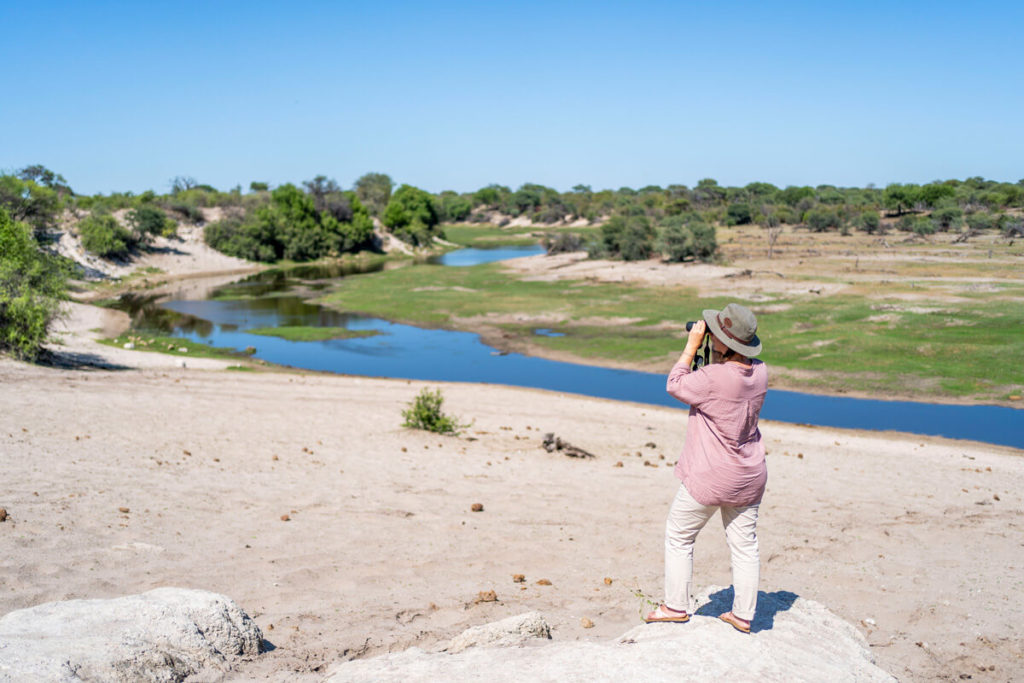
In Botswana, English or Setswana is predominantly spoken. These are the two official languages spoken by most of the population. While the country was still one of Africa’s poorest countries at the beginning of its independence, by 2019 it had developed into one of the continent’s economically more stable and successful states, with a gross domestic product of 18.47 billion US dollars. Important sources of income include the development of natural resources (especially diamonds), meat production, and tourism.
Tourism in Botswana
During our research on Botswana, we immediately noticed that this African country is significantly more expensive for tourists than, for example, South Africa. However, this is intentional, as the government promotes “quality over quantity” and does not want mass tourism in its own country. The focus is primarily on “low-impact tourism” to protect the immense biodiversity and sensitive ecosystems, as well as wildlife reserves.
This is the only way Botswana has remained “Africa’s best-kept secret” to this day. We were told on site that they now want to gradually loosen the screws on their pricing policy so that more locals can benefit from tourism. Incidentally, Botswana is a pioneer in ecotourism and developed a national ecotourism strategy with globally recognized criteria for sustainable tourism back in 2002.
Why Botswana?
We spent a long time deciding which African country we wanted to visit next. It was important to us that it was a country we could explore on our own. And so, in the end, Namibia and Botswana were still on our list. Since we hear and read about Namibia much more often, we ultimately chose Botswana based on our gut feeling. Of course, this was also due to the high density of wildlife and the diverse landscapes that awaited us in Botswana.
We not only traveled through the famous Chobe National Park, but also through the Okavango Delta, the vast salt pans, and the verdant Caprivi Strip in Namibia. We had long dreamed of a trip that would take us further out of our comfort zone. We simply wanted to experience a great adventure again, to be in the midst of nature and, above all, surrounded by wild animals.
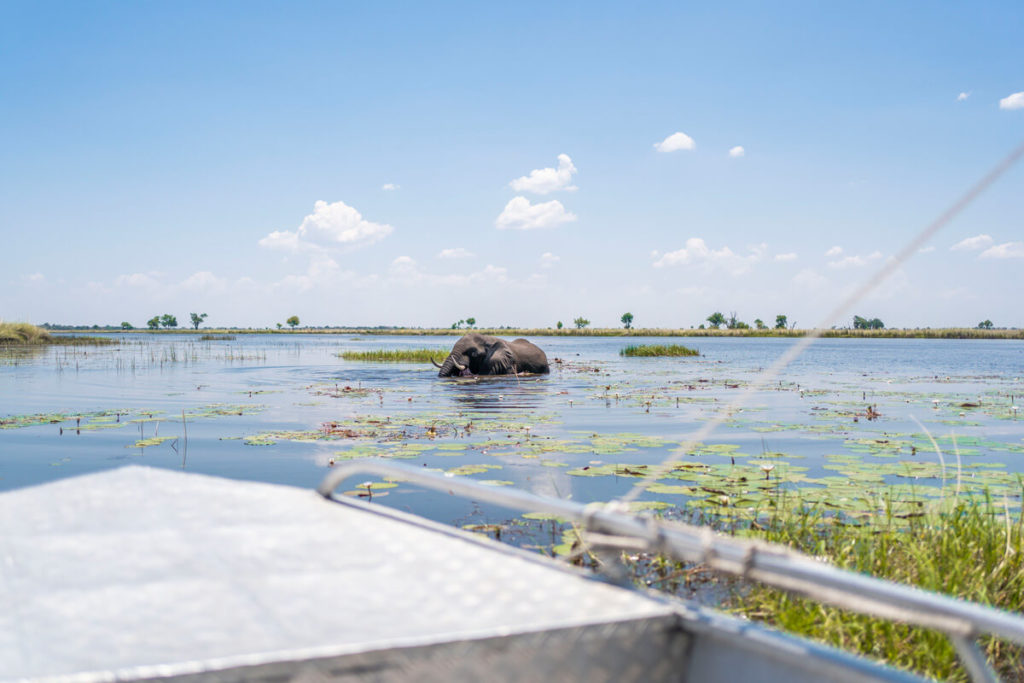
Self-Drive Tour vs. Package Tour
We love traveling on our own. This type of travel usually gives us the most flexibility and allows us to react better to unforeseeable events (closures, storms, etc.). Before our trip to Botswana, we were quite nervous because we didn’t really know what to expect.
- Will everything work out with the car?
- Will we cross the border without any problems?
- Will we always find all the campsites?
- Will we get lost somewhere?
- What will it be like sleeping in the roof tent?
But that’s exactly what we like about this type of travel: you have to step out of your comfort zone every now and then. Travelers who prefer to book a package tour don’t really have to worry about much in the end. Transfers, accommodations, meals, and tours are probably planned, so you can sit back and enjoy the trip to the fullest.
This type of travel is also very nice, especially because you’re usually in company. However, we lack the flexibility and independence here. We love putting together trips and booking everything ourselves at the end. And we love exploring a country on our own even more and deciding for ourselves where to go next.
Botswana Travel Planning – Length of Tour
When planning your trip to Botswana, you should also consider the length of your trip. We recommend at least 3 weeks for a tour of Botswana. This way, you’ll have plenty of time and won’t have to rush through the country. Always remember, Botswana is a large country, and so there are certainly long distances to cover.
We found the 3 weeks to be perfect because we could stay at least 2 nights almost everywhere and didn’t have to drive every day. If you only have 14-18 days, you should focus on a few highlights and not try to drive through the entire country in that time.
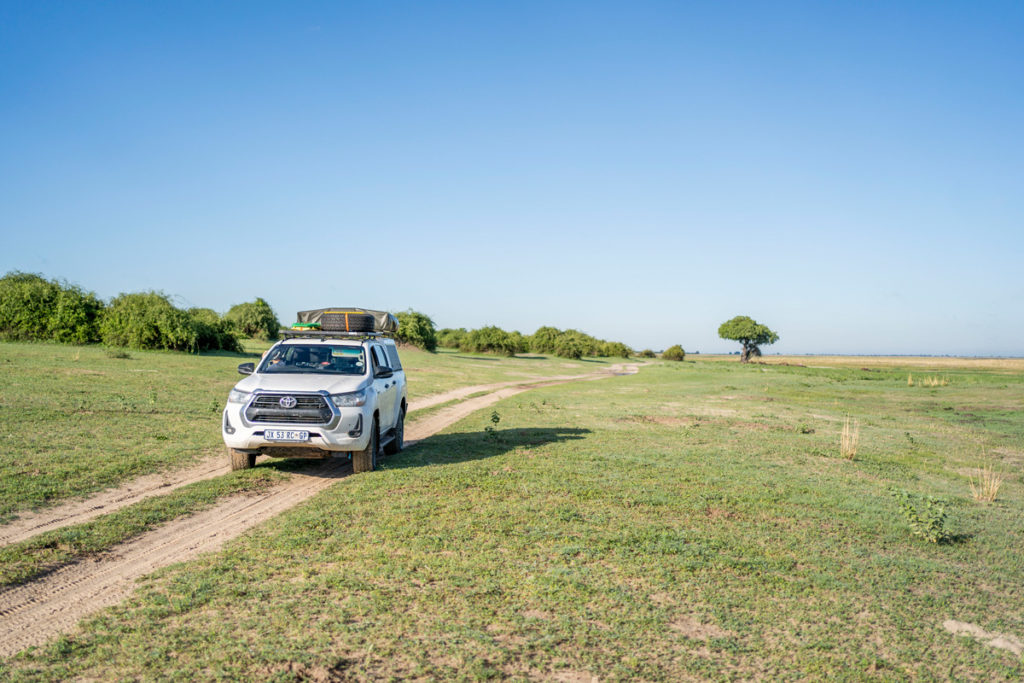
Best time to travel to Botswana
If you take a look at the many climate tables on the Internet and in travel guides, it becomes clear that the best time to travel to Botswana is between April and October. At this time of year, temperatures are pleasant at an average of 20°C; it is dry and very sunny in the country. During the high season (June/July – October), however, you should expect higher prices, fully booked campsites, and significantly more tourists. However, during this time, most animals gather at the few watering holes, which is why this travel time is so popular. We chose the off-season and were very happy with our decision. November turned out to be an ALMOST perfect month to travel, as there were hardly any tourists in the country and prices were relatively low. We had no problem finding a campsite everywhere, even though we only booked a month before our trip. Although it is also very hot during this time, we cope well with temperatures between 35°C and 40°C (it is very hot in the country from September to November).
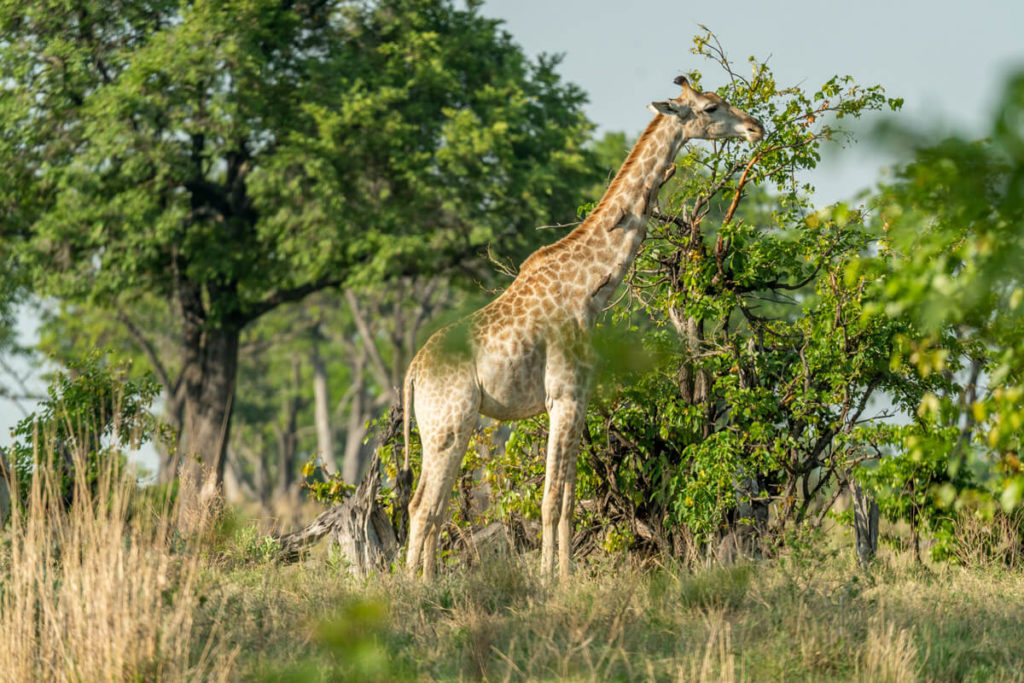
Botswana Travel Planning – Rainy Season
It is only at the end of November / beginning of December that the summer rainy season gradually begins, which lasts until March. The advantage of the rainy season is that the vegetation is lush and green. We particularly liked this in Chobe National Park. According to previous visitors, everything here is brown, bare, and dried out during the dry season.
By the way, we only had rain on two days, and the temperatures weren’t too cold at night. What we also really liked about this time of year was the incredible number of colorful bird species and the adorable offspring of many animals. The downside to this time of year: The lush vegetation naturally made spotting the animals more difficult. You also hardly see any large herds of animals anymore.
Because there’s enough water, they don’t have to walk all the way to the rivers or large waterholes. When it rains frequently, many roads turn into slippery mud pots. We plan to travel to Botswana again next summer and see the country during the dry season. We will then report in detail here what a trip during the dry season in Botswana is like.
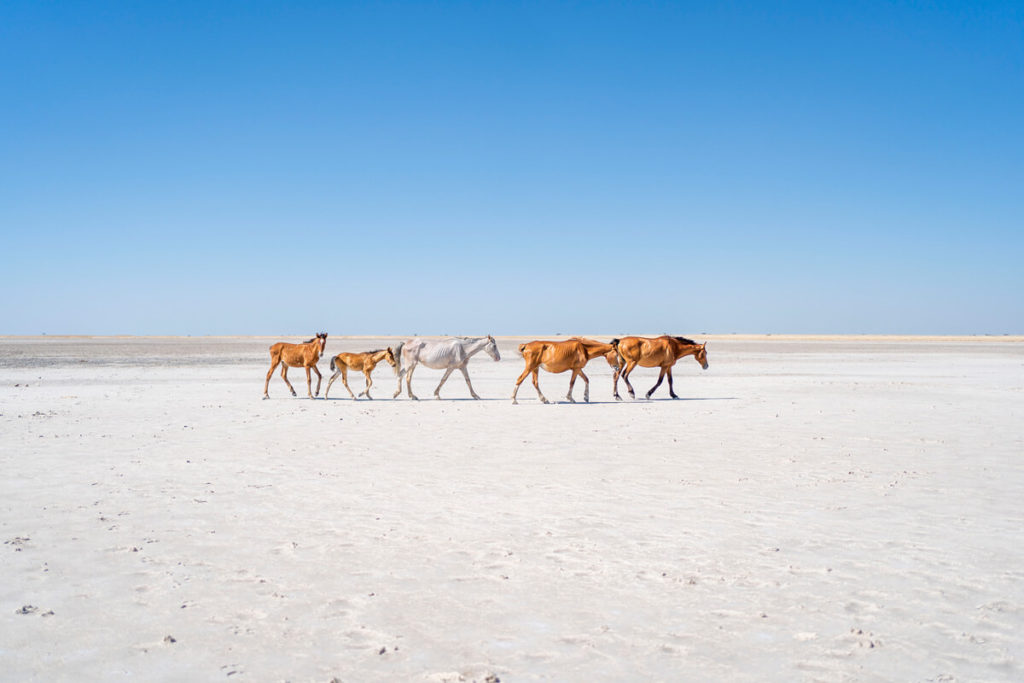
Entry & Passport
To enter Botswana, you only need a valid passport. Make sure it is valid for at least 6 months after entry and has 4 blank pages. If, like us, you plan to travel to several countries, it’s best to have a few more blank pages in your passport. Upon entry, you will receive a fee-free entry permit for a maximum of 90 days per calendar year. If you only have a temporary passport, you will need a visa. To do so, contact the Embassy of the Republic of Botswana in Berlin.

Health & Malaria
While planning our trip to Botswana, we naturally also stumbled upon the topic of malaria, as Botswana is a malaria country. While the risk is relatively minimal in the southern half of the country (the capital, Gaborone, is even malaria-free), it is low to high in the rest of the country, either seasonally or year-round, depending on the region and time of travel.
Especially during the rainy season between November and May, there is a very high risk in the northern half of the country. During the dry season, the risk is lower depending on the region. We’ve summarized all the information we’ve gathered for you in the table below.
Malaria Prophylaxis & Aids
It’s best to book an appointment at a tropical institute (or your family doctor) and discuss all the details with a specialist. Whether you want to take malaria tablets or not is ultimately up to you.
We initially traveled to Botswana without prophylaxis and wanted to find out more on site. At the beginning of the trip, we were only in the southern part of the country, where the risk was very low. The following items also helped us avoid mosquito bites in the first place:
- Impregnated mosquito net (in our case, a roof tent)
- Light-colored, long clothing
- Highly effective mosquito repellent (Peaceful Sleep)
- Impregnated clothing and socks
- Insect incense sticks for the evening
- DOOM room spray
With our equipment, we managed to avoid being bitten very well. The mosquito problem during our trip wasn’t as severe as we expected. In general, we hardly saw any mosquitoes, even in the humid areas. By the end of the trip, I (Bolle) had received maybe 5 mosquito bites.
It wasn’t until we got to Maun that we bought malaria tablets from a pharmacy for our time in the Okavango Delta, as we were a bit unsure. We got “Mositec” (similar to Malarone), took one tablet every day with dinner, and tolerated it very well without any side effects.
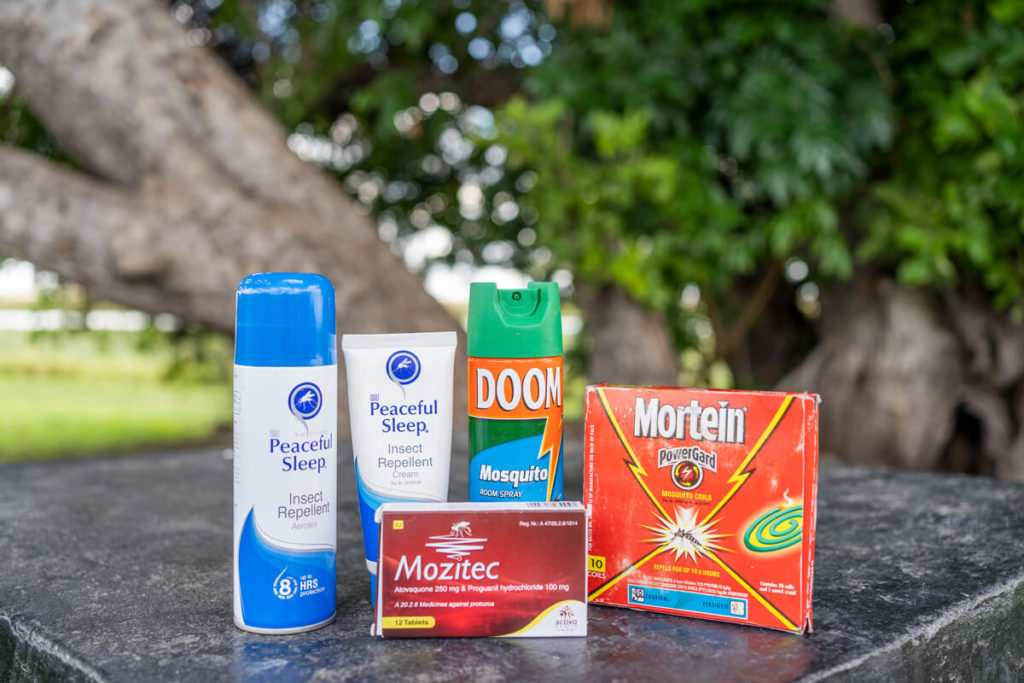
Book flights
There are no direct flights from Germany to Botswana; you first have to fly to Johannesburg or Windhoek. From there, you can continue to Kasane, Maun, or Gaborone (but it’s quite expensive). We flew with Etihad Airways* via Abu Dhabi to Johannesburg (€600 round trip), where we picked up our 4×4 with a roof tent. Car prices are significantly cheaper in South Africa than in Botswana.
Flights to Johannesburg are offered by many airlines, such as KLM, Lufthansa, Eurowings, Turkish Airlines, Qatar Airways, Etihad Airways, Emirates, Ethiopian Airlines, British Airways, Swiss, and Condor. Lufthansa offers direct flights from Frankfurt and Munich. All others usually have a stopover in their country of origin. Flights to Johannesburg and Windhoek start at just €600 to €700.
International Driving Permit
What often nobody wants to see is nevertheless required! Make an appointment at the registry office in good time to have your International Driving Permit issued. This is a certified translation of your German driving license and is usually issued on the spot.
The IFS is valid for 3 years and usually costs only €15 to €20. We had our driver’s license translated online and paid just under €50 for it. This certified translation is also sufficient and doesn’t expire after 3 years. Get your driver’s license translated here*.
Book an off-road vehicle with a roof tent
It quickly became clear that we definitely needed an off-road vehicle for this trip. With a regular car, you can only drive on the paved main roads, but you won’t have much fun on unpaved roads, and you won’t get very far. Many roads are only accessible with a 4×4 anyway. So we researched a suitable provider that offers off-road vehicles with roof tents and camping equipment.
There are indeed many providers, especially if you pick up the vehicle in South Africa (Johannesburg) or Namibia (Windhoek). We emailed countless providers and asked for quotes. We got the best complete package from Bushtrackers. For three weeks, we paid just under €100 per day and got a Toyota Hilux Double Cab 2.4 with a roof tent and all the camping gear. The vehicle was in very good condition and didn’t have too many kilometers on it. A Toyota Hilux Double Cab 2.4 was the best choice for us, as the back seat provided enough space for our luggage. The loading area was very well equipped with a cooler, water canister, batteries, camping table and chairs, three large boxes of dishes and a camping stove, two large gas bottles, and much more. The mattress, blankets, pillows, sheets, and bedding were already neatly stowed in the vehicle. After a detailed vehicle briefing (lasting approximately 1.5 to 2 hours), we were able to drive from the rental station parking lot and begin our adventure.
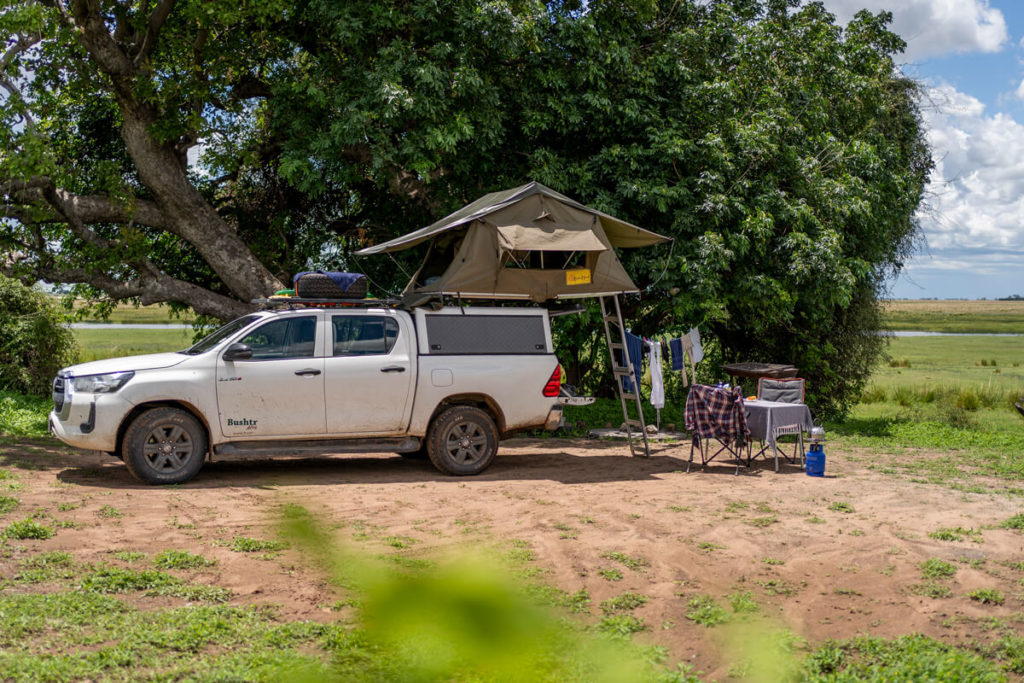
Providers for 4×4 with Roof Tent
We had our eye on the following providers, although we obviously can’t say from our own experience which providers are good or bad. We highly recommend our provider, Bushtrackers. Communication before the trip went smoothly, the price was completely reasonable, and the vehicle itself was impressive in every respect. We will definitely book with this company again on our next trip next year.
- Asco Car Hire
- Bushlore
- Chobe 4×4
- Britz
- McKenzie 4×4
- Kwenda Safari
- Mister Safari
- Africamper
- U Drive 4×4 Rentals
- Mufasa 4×4 Rental
- Selfdrive4x4.com
- Off Road Africa
Information on the border crossings
Now that you have booked your car and the journey can slowly begin, you should note down some important information for the border crossings in advance. Your rental company will provide you with all the important documents you’ll need to present at the border (driver’s license, insurance, border crossing documents, etc.). If you’re driving from Johannesburg across the Martin’s Drift border, you’ll first have to leave and then re-enter Botswana. You’ll pay 140 Pula (approx. €9.87) for the “Road Transport Permit Return,” 50 Pula (approx. €3.50) for the “Motor Vehicle Insurance,” and another 50 Pula for the “National Road Safety” fee. However, we didn’t need the last two items, as a previous driver of our car had already paid for them, and they were still valid (3 months). We were able to pay on site with a credit card without any problems.
By the way, you don’t get an “exit stamp” from the South African side, only a “control stamp” (when entering and exiting within the southern countries). On the Botswana side, you can get a free residence permit for a maximum of 90 days per calendar year, with multiple entries and exits. If you travel from Botswana to Namibia, you also have to leave the country first, then re-enter. Always plan enough time and note the opening hours in advance.
Namibia also issues free entry permits for up to 90 days. However, you will have to pay a type of road tax (“Cross Borderer Charge Permit”) on site in the amount of 337 ND (approximately €20). It’s best to have enough Rand or Namibian dollars with you for this, as you can’t pay with Pula at the Mohembo border. Credit card payments don’t always work either. During the trip, we made five entries and five exits within South Africa, Botswana, and Namibia.
Driving in Botswana
In Botswana, traffic is very quiet and generally pleasant. Outside of the few large cities, traffic is very quiet and generally pleasant. The main roads are paved and in fairly good condition. Only on the A35 towards Namibia was there a 30-kilometer-long potholed track. Otherwise, we made good progress and didn’t have to drive any longer than the navigation system predicted.
But be careful! You’ll repeatedly pass animals grazing contentedly on the side of the road. Here, you constantly have to ease off the accelerator to drive slowly past the animals. But in addition to donkeys, cows, sheep, goats, and horses, there are also giraffes, zebras, and elephants.

The unpaved roads within the national parks were exciting for us. However, none of the roads were a problem for our 4×4, even when the sand was a bit deeper or we had to drive through a muddy puddle. We had no previous experience with an off-road vehicle, but we handled it very well over the three weeks.
In the car, we had two spare tires, sand mats, and a compressor. These gadgets should definitely be on board. More on this extensive topic will follow soon in a separate post here on the blog.
Important main roads:
- A1 between Francistown and Gaborone
- A2 between Lobatse/Pioneer Border and Buitepos Border
- A3 between Francistown and Maun
- A14 between Palapye and Orapa
- A30 between Francistown, Orapa and Khumaga
- A33 between Kasana and Nata
- A33 between Ngoma and Kasane
- A35 between Sehithwa and Mohembo Border
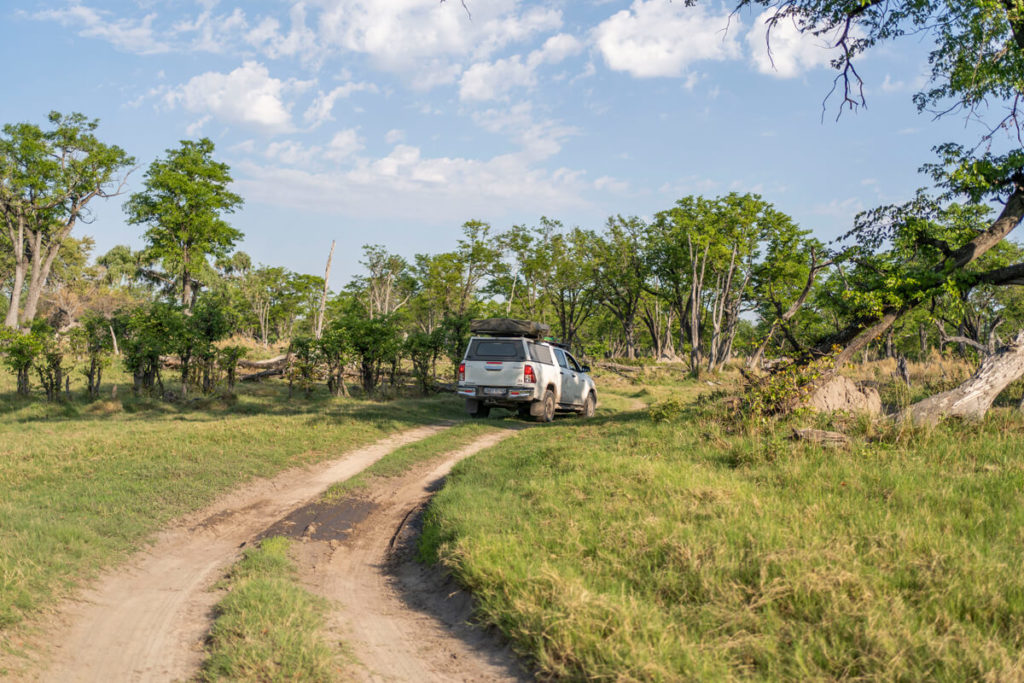
Speed Limits
If you want to drive through the country yourself, you should of course adhere to the traffic regulations and speed limits. Within towns you are allowed to drive a maximum of 60 km/h, on highways 120 km/h. In the national parks you are allowed to drive a maximum of 40 km/h, but this is usually not possible, as people drive slowly to avoid missing any animals.
In addition, some roads can be slippery, sandy, or bumpy. You can read more about driving in Botswana soon here on our blog.
Planning Your Route
After you’ve clarified and checked off all the important points of your Botswana trip planning, you should now take care of your route. Which highlights do you want to see? Which regions particularly appeal to you? It’s best to grab a travel guide, browse through the individual chapters, and make a few notes.
To prepare for our trip to Botswana, we used the Dumont* travel guide. It quickly became clear to us that we wanted to explore the salt pans, the Okavango Delta, and Chobe National Park.
Planning Your Trip to Botswana – Our Route
In the following table, you can see our exact route in detail (4,500 km in total). After the trip, we can say that we generally found this route really good. We actually wanted to drive from the Okavango Delta via Kwai, Savuti, and Linyanti to Chobe National Park.
Since we had no experience with an off-road vehicle and couldn’t judge the routes through the wilderness at all, we drove around it to be on the safe side and across the Caprivi Strip in Namibia.
Note: The Caprivi Strip in Namibia is essentially just a never-ending (boring) asphalt road. The only highlight here is Bwabwata National Park, which is divided into three areas.
We found the “Kwando Core Area” the most beautiful, even though there were very, very few animals to be seen in the entire national park. Furthermore, there is hardly any signage in the individual areas. Our campsite right by the river was very nice, though!
Navigation on Site
We used Google Maps and Maps.Me to navigate the country. Since we were able to get a SIM card with data at the beginning of the trip (Orange | 12 GB for €21), navigating was no problem. We also mostly use Google Maps’ offline maps anyway. Before the trip, we also ordered the map from Tracks4Africa* so we’d have an overview in case of an emergency.
In the individual national parks, you can also purchase the respective national park brochure, which contains excellent maps. The maps of the Moremi Game Reserve and Chobe National Park, in particular, were very detailed and showed us all the camps, lodges, loops, trails, and picnic areas. You can also mark all the animals you’ve discovered in the booklets.
Update 11/2024: There are now numerous eSIM providers. We’ve recently always used Airalo* and were very satisfied with it. For our next trip, we’ll test the eSIM for Botswana*. With the code “NICOLE2629”, you’ll get $3 credited. We’ll also get the Orange SIM card on site again.
Campsites & Accommodations
If you’re traveling to Botswana during peak season (May/June – September/October), you should book your campsites and accommodations in advance. Especially in the national parks, there are often only a few pitches, which, of course, sell out quickly. So if you have your eye on a particular campsite, book it before your trip (e.g., Nxai Pan, Baines Baobab, Third Bridge, etc.).
We booked and paid for most of the sites before our trip, even though we could have easily booked many of them on-site. But you never know in advance how busy a campsite will be and how fully booked it might be. We also didn’t want to drive countless kilometers to a site, only to find out that there were no more available pitches.
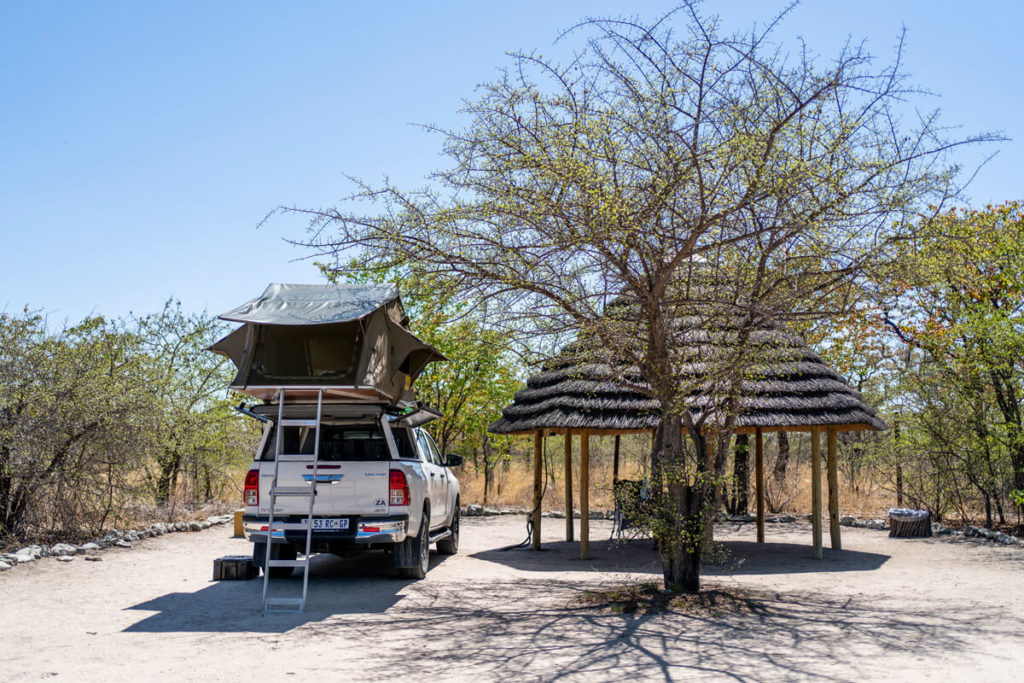
Book campsites & pay in advance
Many people write online that you should book campsites and off-road vehicles at least a year in advance. However, this is more true during peak season. We only organized the vehicle two months before departure and the campsites one month before.
To book the pitches, we simply emailed them and asked about the prices. We had to pay for almost all campsites in advance via bank transfer, which was obviously much more time-consuming than quickly handling it via PayPal or credit card.
On site, we always showed our booking confirmation and were able to check in everywhere without any problems. We also thought it was cool that we rarely had to pay anything on site, as we had already paid for all the campsites in advance.
At the end of the trip, we left everything open and simply drove to the respective campsites (Elephant Sands, Woodlands, and Grenze). We found some of these in the iOverlander app. In a separate post, we have listed all our campsites for you and added all the information about prices and booking.
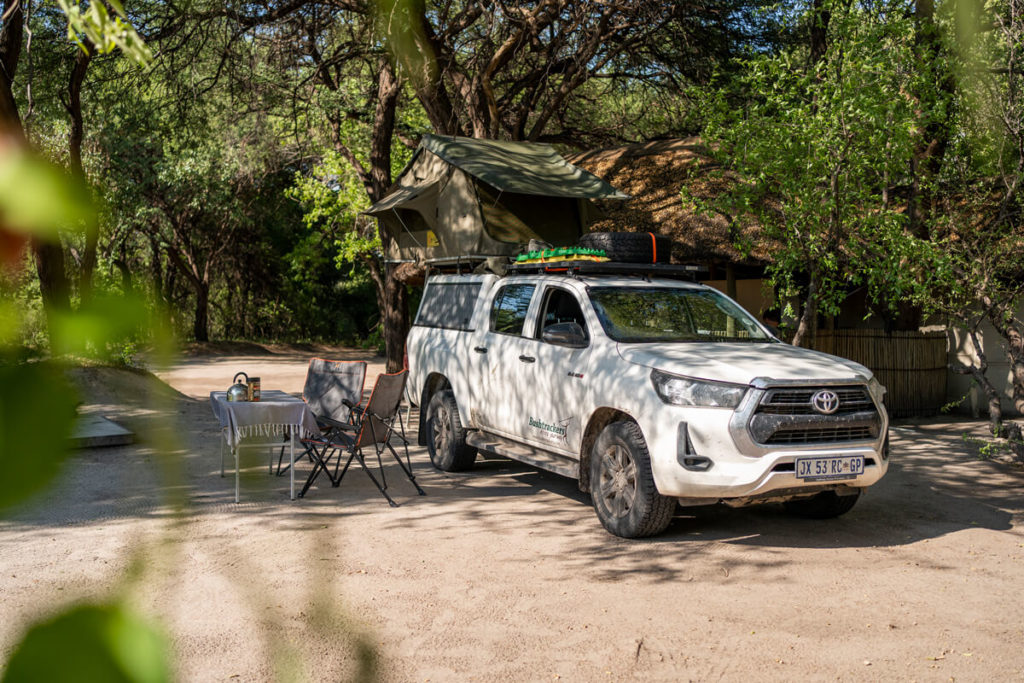
Electricity & Power Adapter
In Botswana, onlytype D, G, and M plugs are used, which is why you should definitely get a travel adapter*. Most of our campsites were equipped with power boxes where we could easily charge our devices. We also had two powerful power banks* with us so we could charge our cell phones and camera batteries while on the go.
Also, get a cigarette lighter with a USB charger*, which you can use to charge your smartphone and other devices while driving. We also recommend a practical multi-socket plug*, which you can use to charge several devices at once. The mains voltage in Botswana is 30V.
Currency & Payment
In Botswana, payment is made with the Pula (BWP or P). Currently, 1 € is worth approximately 14.21 Pula. Banknotes are available in denominations of 5, 10, 20, 50, and 100 Pula, and coins in denominations of 1 and 2 Pula, as well as 1, 5, 10, 25, and 50 Thebe. The word “Pula” means “rain” and underlines the importance of water for this country, which is largely dominated by dry savannah.
You can pay locally with cash or credit card. We were usually able to pay by credit card without any problems at gas stations, supermarkets, pharmacies, shops, and also at most lodges and campsites. This was rarely impossible (power outage, no card reader), but we always carried some cash with us for such cases.
We only withdraw cash locally from ATMs in the respective country, preferably directly from banks. We have withdrawn money in Palapye, Serowe, Maun, and Kasane, among other places. We have also carried various travel credit cards for many years. You can read our best tips for using credit cards abroad here: Security tips for credit cards.
Insurance for your trip
What insurance(s) do you actually need for a trip abroad? You probably don’t ask yourself this question very often, or even like it very much. And honestly, there are really more exciting topics than travel insurance. But you shouldn’t neglect this topic under any circumstances.
No matter whether you’re in Thailand, South Africa, Indonesia, or Portugal, basic travel protection can never be a bad idea. You can read everything about this topic in the following article: Travel insurance.
We have the following insurance policies:
- Foreign health insurance with Hanse Merkur*
- Insurance for cameras, lenses and laptops with Allianz*
- Personal liability insurance with Hanse Merkur*
- If applicable, travel cancellation insurance (but rather rare)
- If applicable. Extended car insurance (but rather rare)
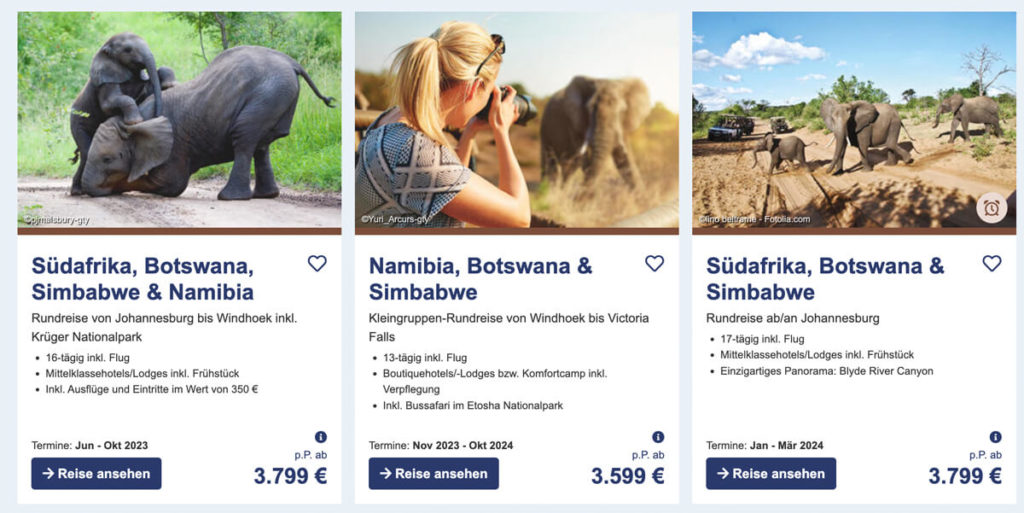
Safety in Botswana
We found Botswana to be a very safe travel destination and never felt unsafe or uncomfortable. The domestic political situation is stable, and according to the Federal Foreign Office, the crime rate was recently at a low level. While there are also burglaries, robberies, pickpocketing, and credit card thefts in large cities (e.g., Gaborone), we didn’t experience any of these.
It must also be said, however, that we only ever stayed in the cities briefly to do some shopping and fill up the car with gas. Of course, you should follow a few guidelines when driving through the country in an off-road vehicle. Don’t leave any valuables visible in the car, and avoid expensive jewelry or clothing. One of us always stayed in the car while the other did the shopping. Therefore, our car was never left unattended. At night, we took all valuables upstairs to our tent. We also always stow them in a Pacsafe (12 L)* while driving. If you’re driving through the country yourself, you should avoid driving at night. Animals are often roaming the roadside, making driving unpleasant even during the day.
Botswana Packing List
You’re slowly starting to finalize your travel plans for Botswana. All that’s missing is a good packing list, right? In the following article, we’ll tell you what we always take with us on our Africa trips and what you can safely do without. Enjoy browsing through our ☞ safari packing list for Africa.
Botswana Travel Planning – Our Conclusion
Although planning your trip to Botswana was quite time-consuming, all the effort was more than worth it. While we had quite a few to-dos on our list before the trip, we were able to enjoy the trip to the fullest once we arrived. We advise against traveling to Botswana spontaneously if you plan to take a self-drive trip like this.
Plan your route roughly before your trip, decide on a specific travel time, and book some campsites in advance. Most importantly, of course, is your off-road vehicle, which you should take care of first. With our tips for planning your trip to Botswana, nothing should go wrong!